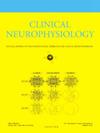Relationship between scalp high-frequency oscillations and time since the last seizure in epilepsy
IF 3.7
3区 医学
Q1 CLINICAL NEUROLOGY
引用次数: 0
Abstract
Objective
The accuracy of self-reported seizure-freedom duration are essentially limited. Scalp high-frequency oscillations (HFOs) are more tightly linked to seizures than spikes alone and are a promising new biomarker. The purpose of this study is to determine the relationship between scalp HFO and time since the last reported seizure.
Methods
The study population consisted of 169 pediatric epilepsy patients (91 males; age range, 0–20 years). A holdout method was used to develop and validate a predictive model (multivariate HFO model) to estimate the time since the last reported seizure.
Results
The multivariate HFO model was created with four variables: scalp HFO detection rate, developmental delay, epilepsy duration, and the use of antiepileptic drugs. The area under the curve (AUC) of the multivariate HFO model was higher than that for the HFO and spike models in all four discriminations for time since the last reported seizure (≥ 2 years: AUC = 0.95, ≥ 1 year: 0.91, ≥ 2 months: 0.82, and ≥ 2 weeks: 0.76).
Conclusions
The multivariate HFO model showed higher performance in patients with a longer time since the last reported seizure (≥ 1 year).
Significance
This model may help establish a new measure of epilepsy remission.
求助全文
约1分钟内获得全文
求助全文
来源期刊

Clinical Neurophysiology
医学-临床神经学
CiteScore
8.70
自引率
6.40%
发文量
932
审稿时长
59 days
期刊介绍:
As of January 1999, The journal Electroencephalography and Clinical Neurophysiology, and its two sections Electromyography and Motor Control and Evoked Potentials have amalgamated to become this journal - Clinical Neurophysiology.
Clinical Neurophysiology is the official journal of the International Federation of Clinical Neurophysiology, the Brazilian Society of Clinical Neurophysiology, the Czech Society of Clinical Neurophysiology, the Italian Clinical Neurophysiology Society and the International Society of Intraoperative Neurophysiology.The journal is dedicated to fostering research and disseminating information on all aspects of both normal and abnormal functioning of the nervous system. The key aim of the publication is to disseminate scholarly reports on the pathophysiology underlying diseases of the central and peripheral nervous system of human patients. Clinical trials that use neurophysiological measures to document change are encouraged, as are manuscripts reporting data on integrated neuroimaging of central nervous function including, but not limited to, functional MRI, MEG, EEG, PET and other neuroimaging modalities.
 求助内容:
求助内容: 应助结果提醒方式:
应助结果提醒方式:


